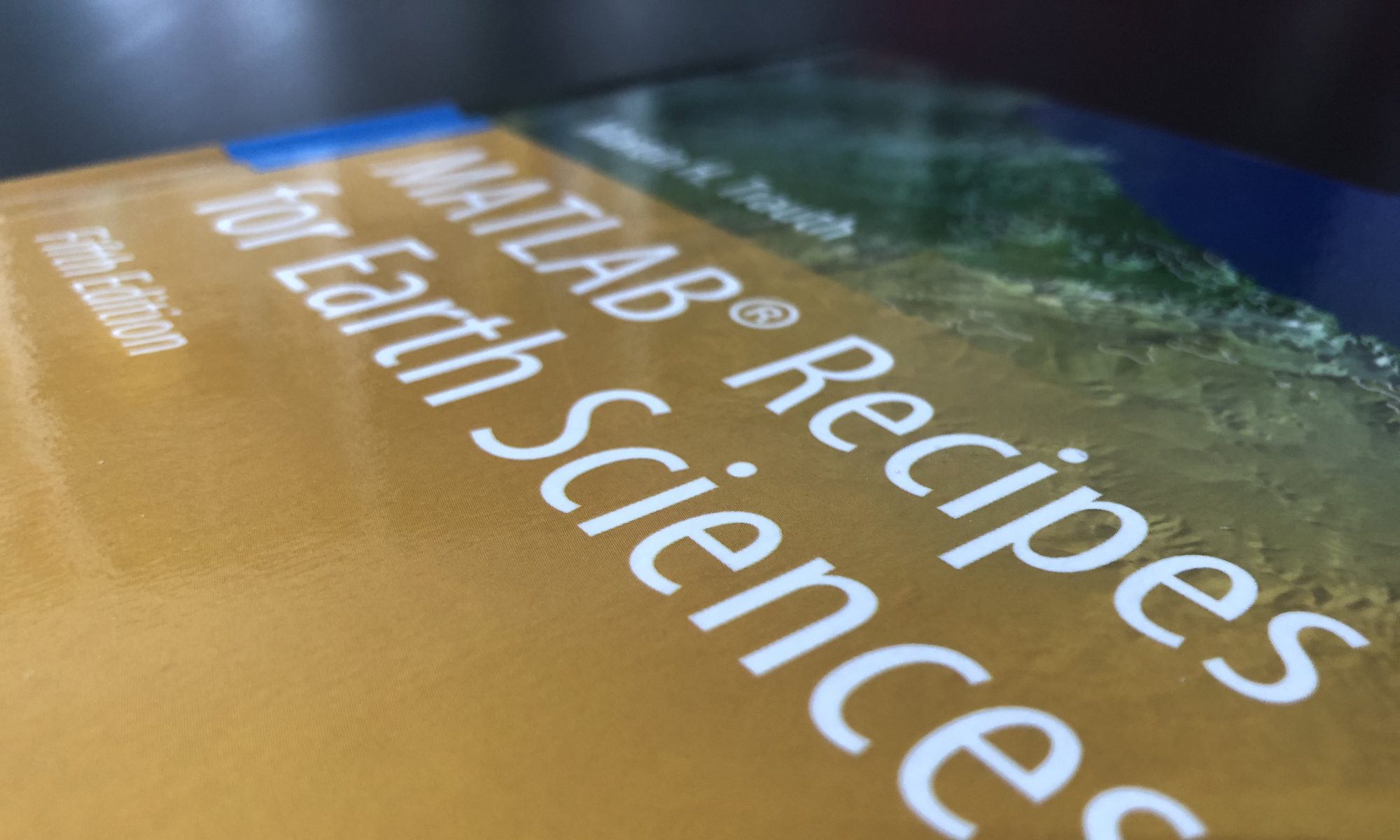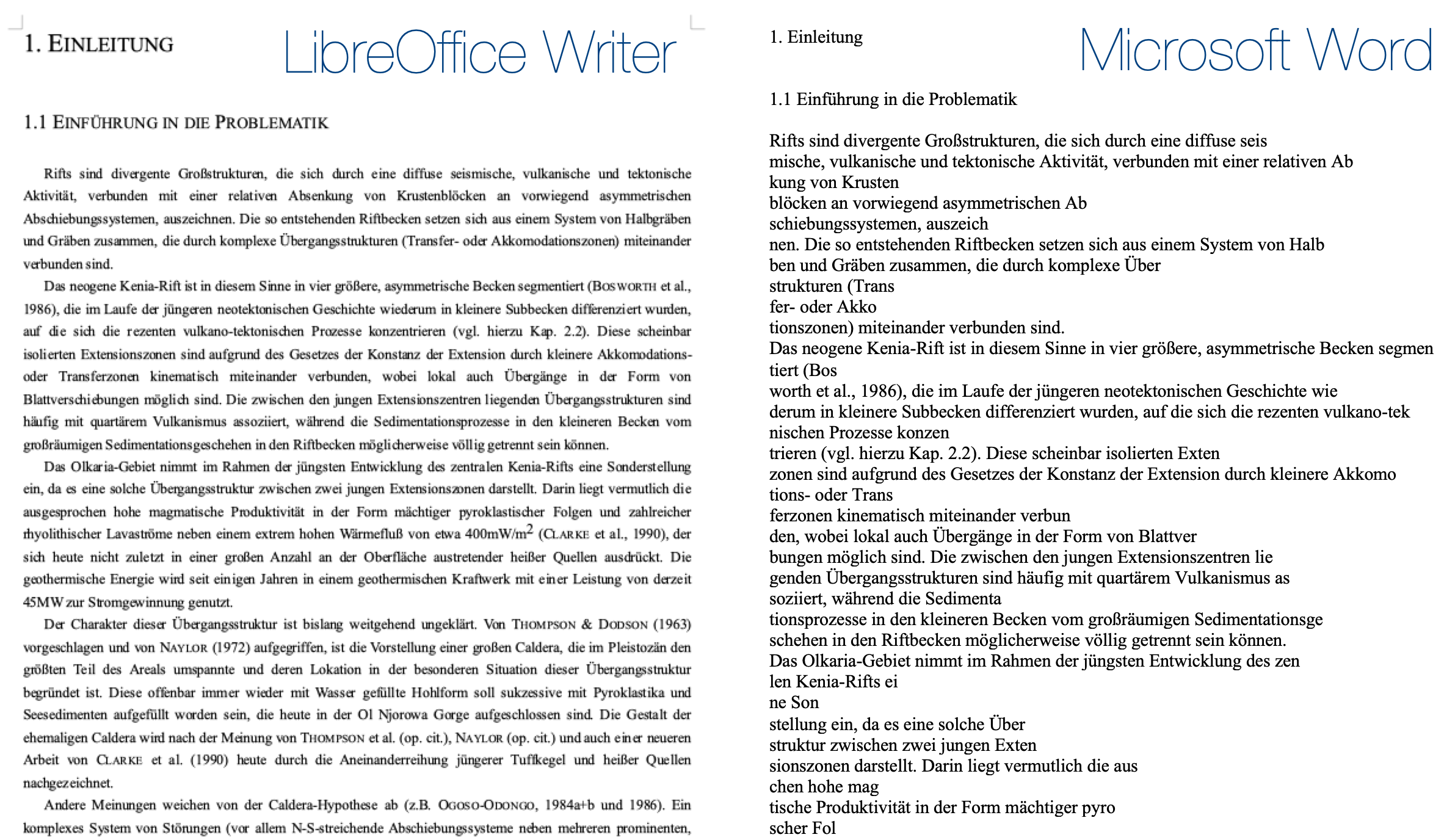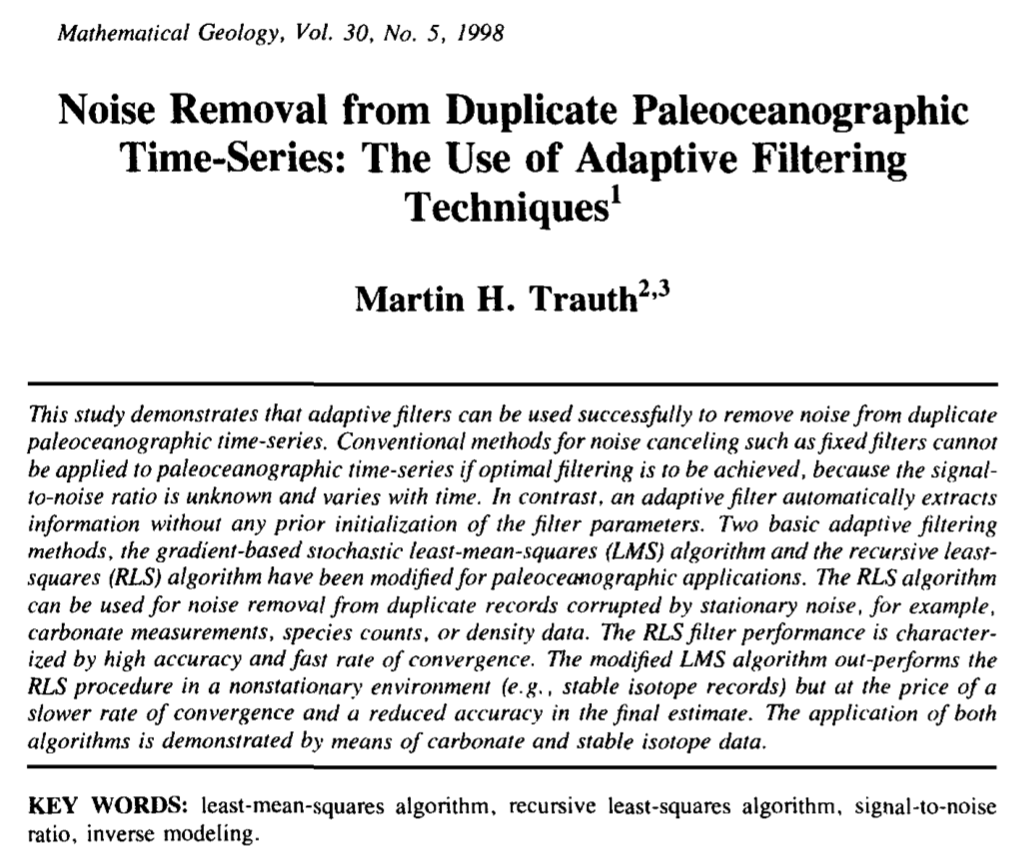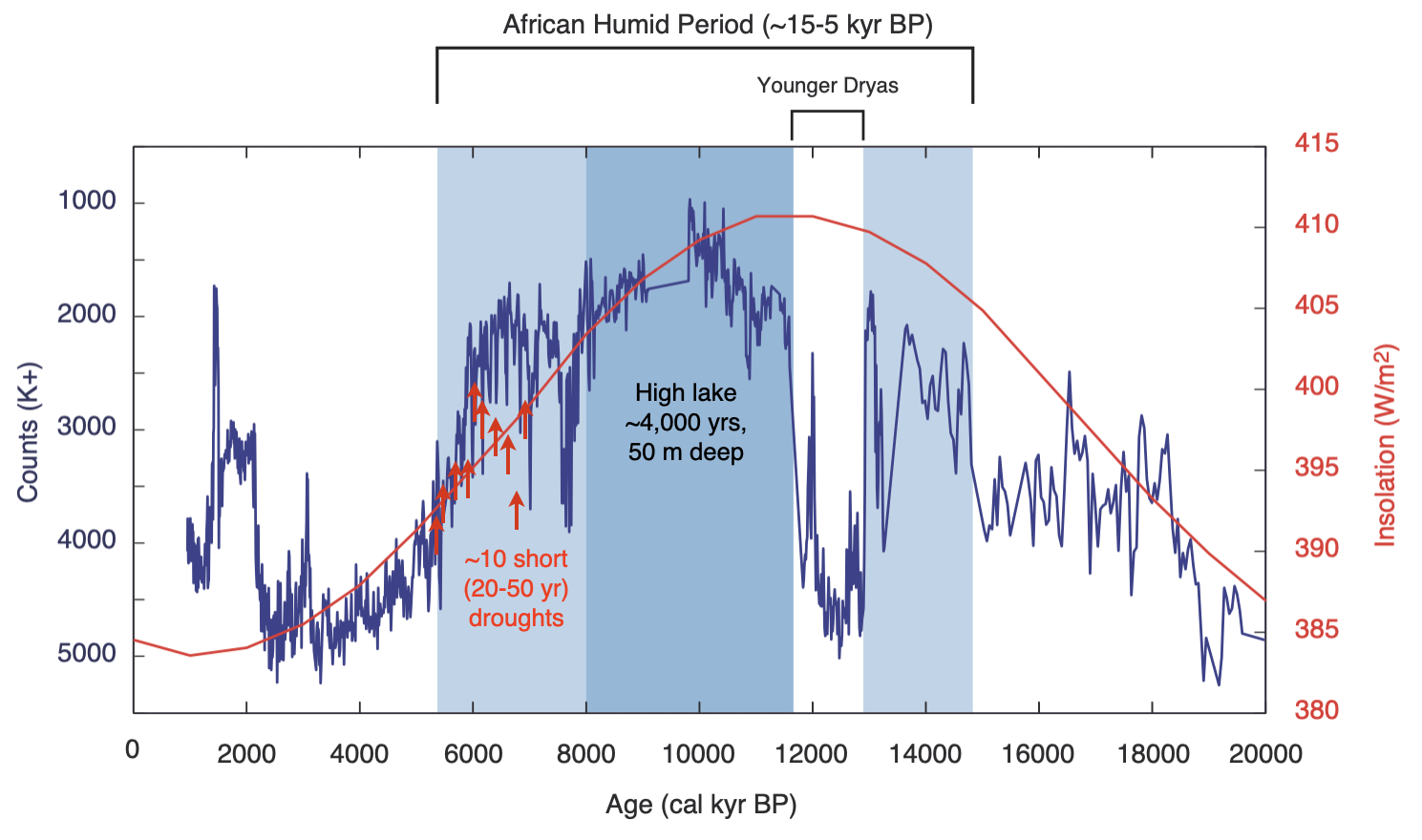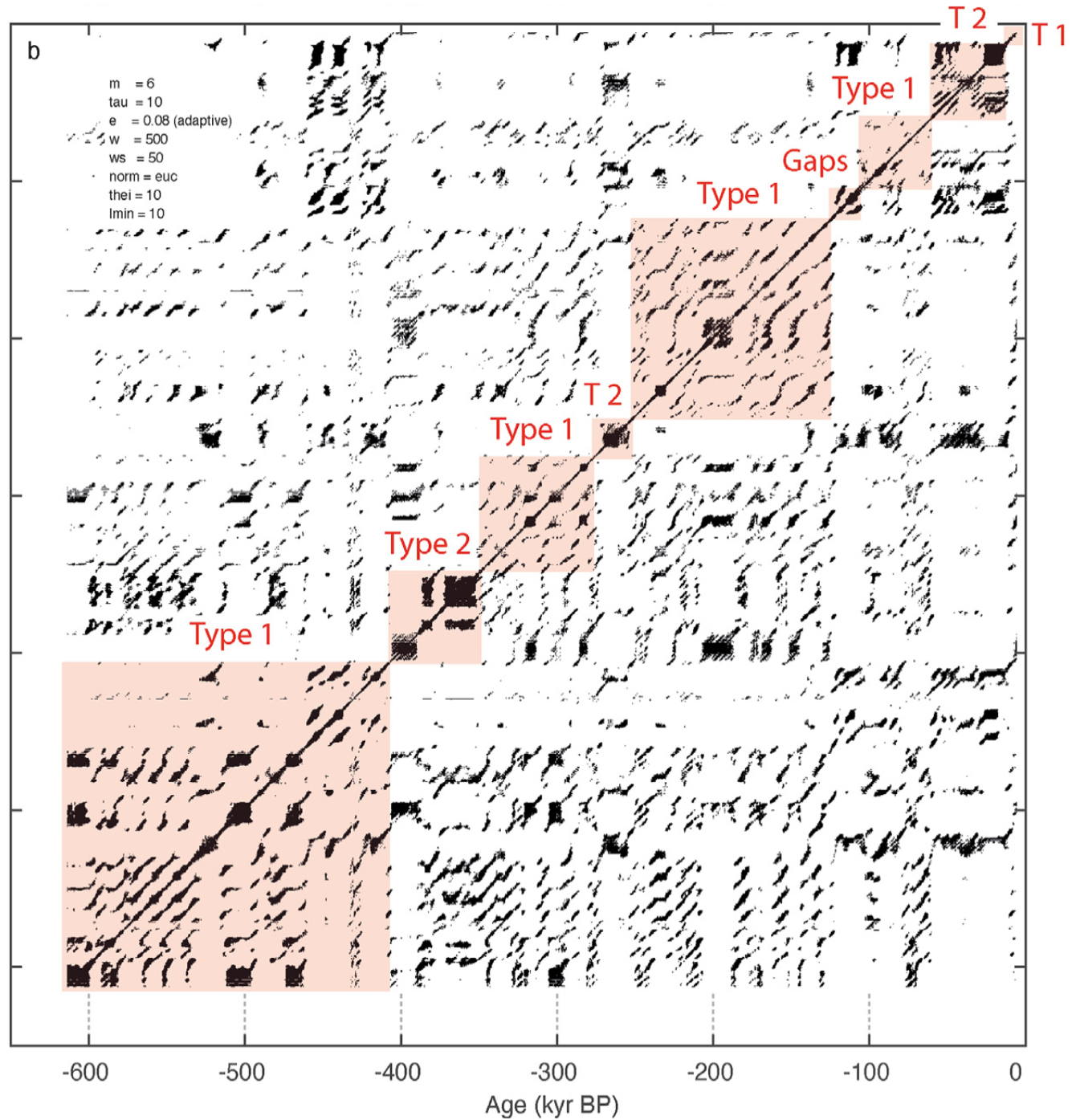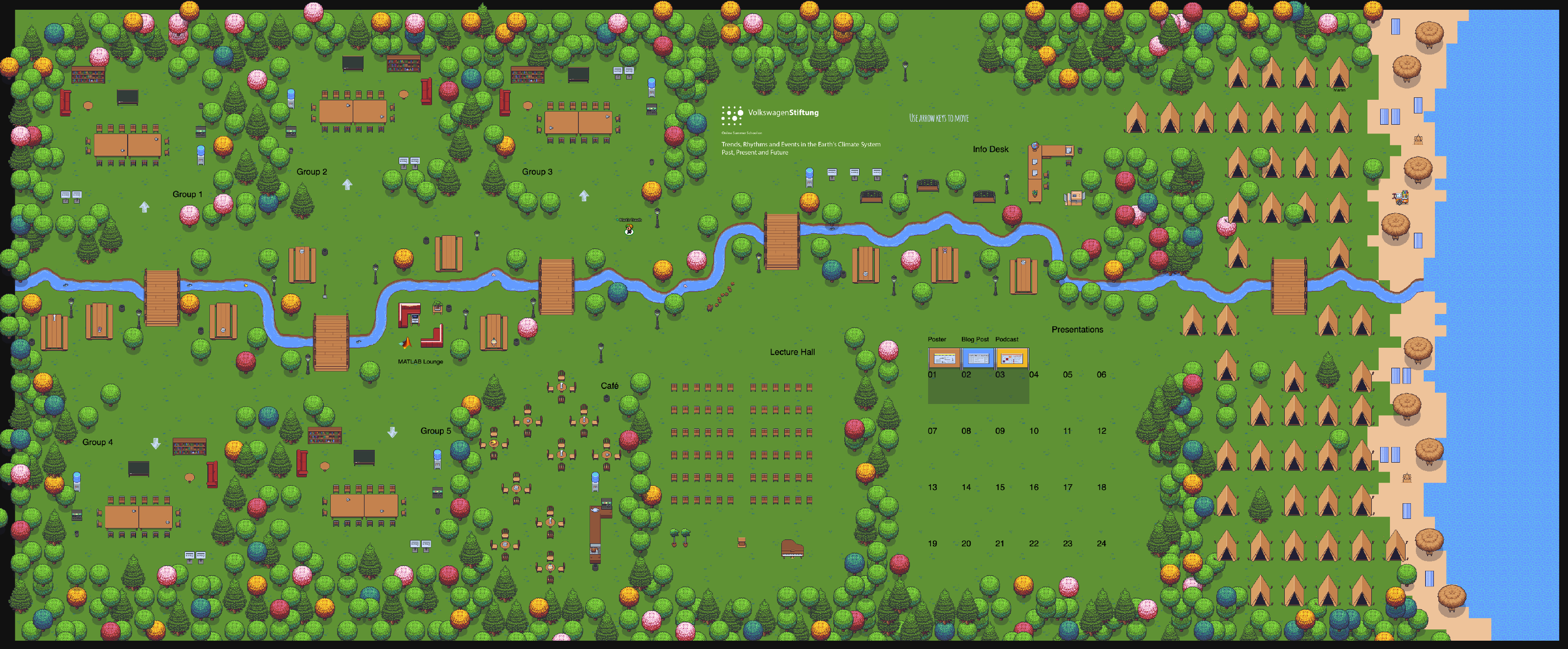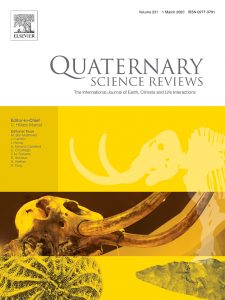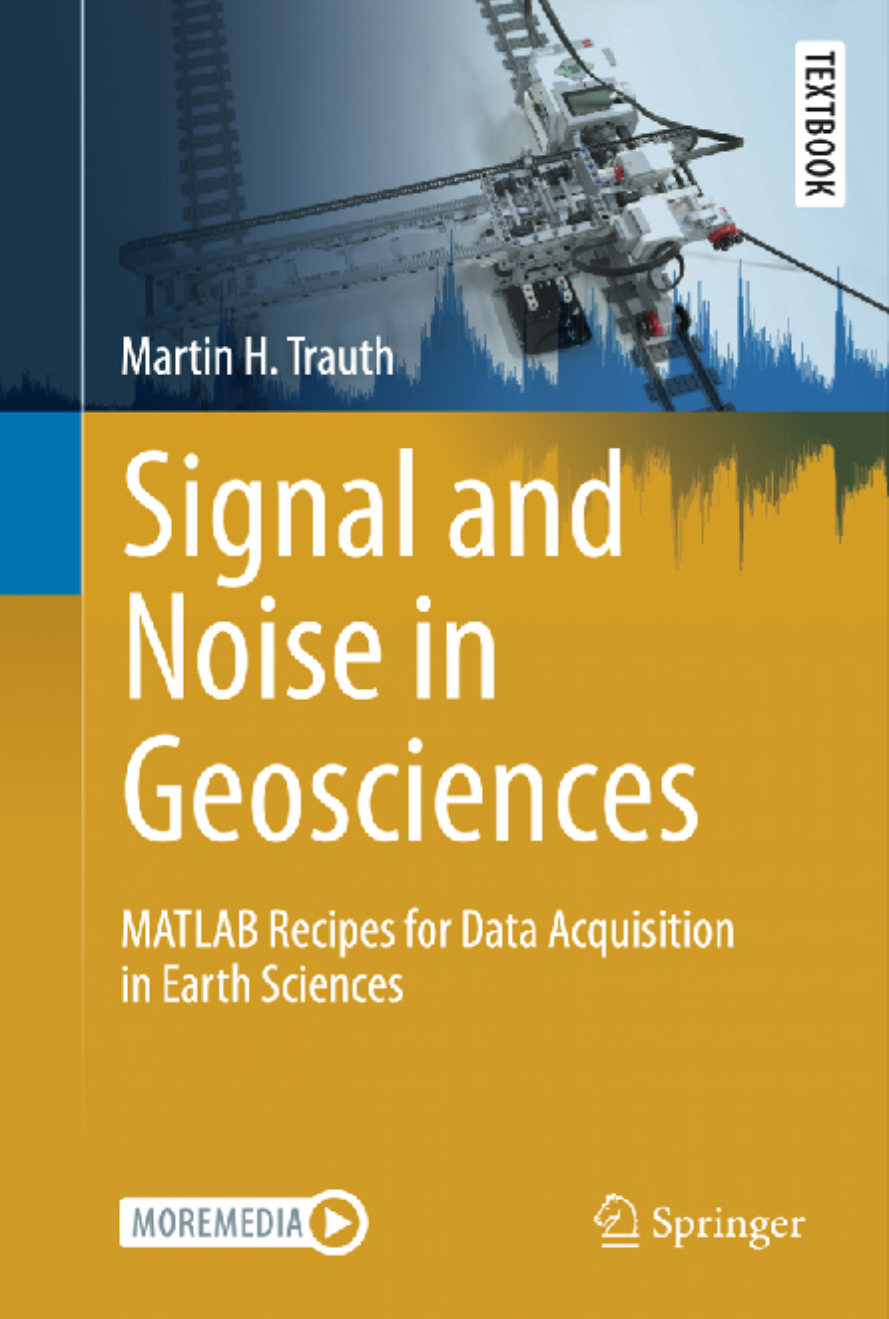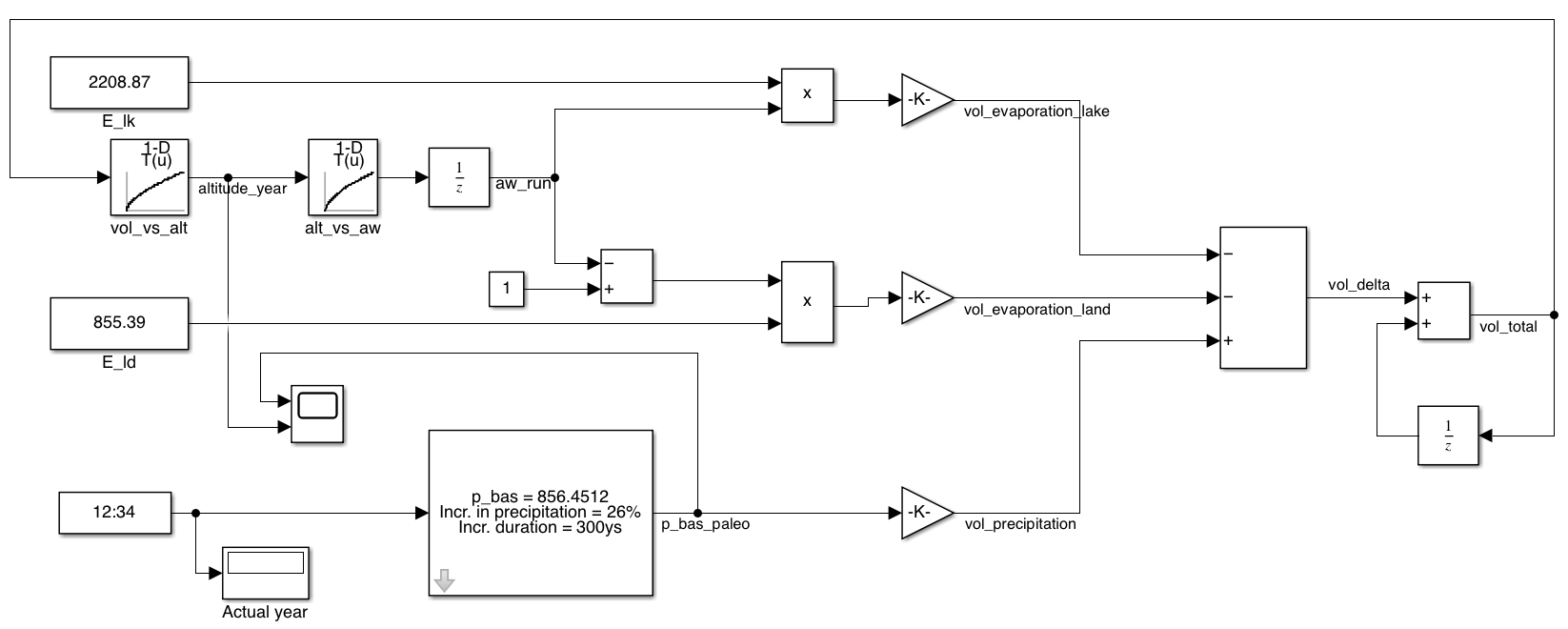The older you get as a scientist, the more you encounter the problem that old files can no longer be opened. This does not affect MATLAB code and data files as much as graphics or text files. In the case of text, it turns out that LibreOffice displays Word files from the 1990s correctly, while Word is unable to open files created by older versions of the same software.
MATLAB Code of “Noise Removal from Duplicate Paleoceanographic Time-Series …” (Trauth, Math. Geol. 1998)
Here you find the MATLAB code and of my paper “Noise Removal from Duplicate Paleoceanographic Time-Series” published in the Elsevier journal Mathematical Geology. Continue reading “MATLAB Code of “Noise Removal from Duplicate Paleoceanographic Time-Series …” (Trauth, Math. Geol. 1998)”
New Paper on Past abrupt changes, tipping points and cascading impacts in the Earth system
The climate time series from the Chew Bahir Basin in southern Ethiopia shows one of the best examples of climate tipping, the transition from one stable condition to another. About 5,500 years ago, the climate of East Africa tipped from humid conditions with extensive lakes and forests to a dry climate at the end of the so-called African Humid Period. Continue reading “New Paper on Past abrupt changes, tipping points and cascading impacts in the Earth system”
MATLAB Code of “Recurring types of variability and transitions …” (Trauth et al., QSR 2021)
Here you find the MATLAB code and data of our paper “Recurring types of variability and transitions in the ~620 kyr record of climate change from the Chew Bahir basin, southern Ethiopia” published in the Elsevier journal Quaternary Science Reviews. Continue reading “MATLAB Code of “Recurring types of variability and transitions …” (Trauth et al., QSR 2021)”
5th Summer School Starts with 72 Participants and 15 Instructors
We will open our summer school on “Trends, Rhythms and Events in the Earth’s Climate System – Past, Present and Future” on funded by the VolkswagenFoundation and with support from Springer, MathWorks and Cambridge University Press on Sunday, May 23rd, 2021 with 72 participants and 15 instructors. Continue reading “5th Summer School Starts with 72 Participants and 15 Instructors”
QSR Virtual Special Issue on Global monsoonal systems during the last glacial-interglacial cycle
I am pleased to announce a Quaternary Science Reviews virtual special issue on “Global monsoonal systems during the last glacial-interglacial cycle”. This special issue focuses on well-dated records of all regional monsoon systems as well as paleomonsoon modelling during the last glacial-interglacial cycle (from ~ 150,000 years ago to the present). Interested authors of articles on the topic may contact me via email. Continue reading “QSR Virtual Special Issue on Global monsoonal systems during the last glacial-interglacial cycle”
New Book “Signal and Noise in Geosciences” (Springer 2021)
The new textbook “Signal and Noise in Geosciences” (Springer 2021) introduces methods of data acquisition in geosciences using MATLAB together with inexpensive data acquisition systems, such as the sensors on board of smartphones, sensors that come with the LEGO MINDSTORMS set, webcams with stereo microphones, affordable spectral and thermal cameras. Continue reading “New Book “Signal and Noise in Geosciences” (Springer 2021)”
Online-Workshop: Introduction to Graphical Programming with Simulink
Since 2018, the University of Potsdam has unlimited campus-wide access to MathWorks technology for all university members, which combines professional tools for data analysis with a development environment for software and a higher-level programming language. In addition to using MATLAB, this access also allows to use Simulink, a block diagram environment for model-based design. Students and employees of the University of Potsdam and interested guests are therefore invited to participate in the “Introduction to Graphical Programming with Simulink” workshop, which is offered under the University of Potsdam’s MathWorks Campus license (9 April 2021, 2 to 5 pm, online course, in English language).
Continue reading “Online-Workshop: Introduction to Graphical Programming with Simulink”
